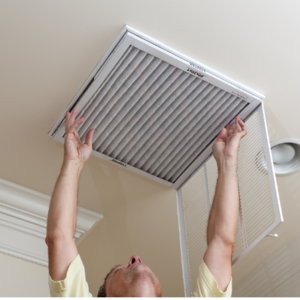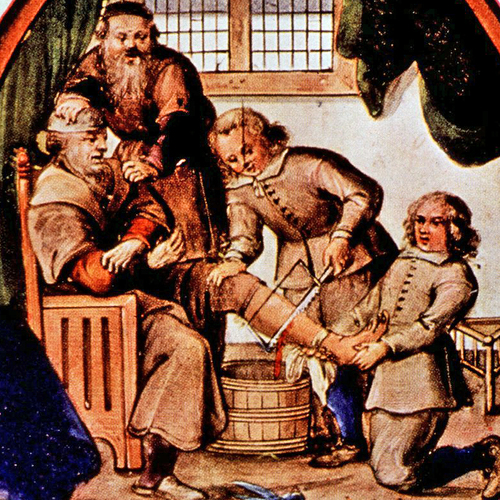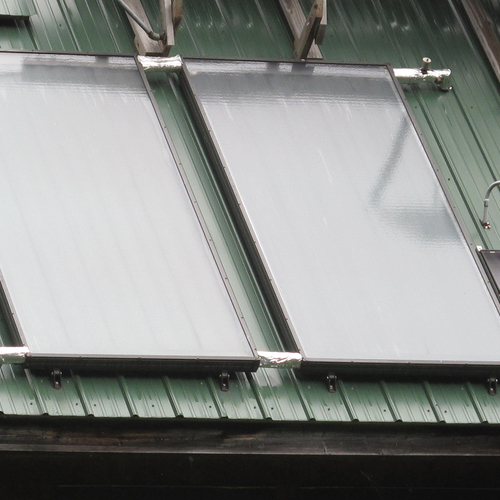
Since my first construction-related job in 1974, labor costs have risen and tool costs have dropped. This changes the way contractors make decisions related to tool maintenance and repair. Many tool repair jobs that would have been routine 50 years ago aren’t worth the trouble these days. In the same way that watch repair and shoe repair are now rare, few carpenters these days bother to replace the wooden handle on a hammer or replace the broken tape in a tape measure. If a hand tool breaks, you throw it away and buy a new one.
Of course, I replace or repair frayed cords on my power tools, and occasionally replace a bad switch. Any tool with an internal combustion engine gets regular tune-ups, air filter changes, and sparkplug changes. I still sharpen my chainsaw chain. But I no longer get circular saw blades professionally sharpened. (Believe it or not, that used to be a thing.) Like everyone else, when my circular saw blades get dull, I throw them away.
Tape measure tapes? Forget about it. Throw the whole tape measure in the trash.
I still replace wooden handles on my wheelbarrows, axes, and mauls, although these days, better handles have been invented—steel or fiberglass handles—so I have fewer tools with wooden handles.
An inventory of dry ash
Ash is the best wood species for baseball bats and tool handles, and of course dry ash is better than green ash. As a young man, cutting firewood, I used to save 40-inch bolts of clear ash for handle wood. I would split the bolts into quarters and store them in a corner of the garden shed. Once dry, I would use the wood to make tool handles.
After I had split, sawn, and whittled my replacement handle into a close…
Weekly Newsletter
Get building science and energy efficiency advice, plus special offers, in your inbox.

This article is only available to GBA Prime Members
Sign up for a free trial and get instant access to this article as well as GBA’s complete library of premium articles and construction details.
Start Free TrialAlready a member? Log in














12 Comments
The Estwing shank was also good for chopping shims to length. Before Estwing (1981) Craftsman made a similar hammer which I loved. You younguns may not remember that.
Bill,
According to this web page, Estwing hammers have been manufactured and sold since 1925. I'm not sure, however, when the current handle style was developed.
Over the years, I lost my favorite Estwing hammer but I gained an Estwing framing hammer and an Estwing mason's hammer. So I feel like I'm ahead of the game. Some tools you love like family members. Well, maybe more than certain family members. You don't get to pick your family.
I lost the Estwing I’d had since High School building trades to an attic a couple years ago. By the time I realized it was missing, its exact location beneath the cellulose was uncertain, so I bid it farewell, to be exhumed by some unsuspecting remodeler in the distant future. I still think of this hammer from time to time.
Also, I often use a hammer as the image of an ideal tool when frustrated with technology or something. Too many modern tools, of whatever kind, are loaded with frills and features but fail to consistently perform their primary purpose.
“Here’s to the humble hammer, you pick it up and it drives a nail.”
People still sharpen circular saw blades, if the blade quality makes it worthwhile. $20 to sharpen a saw blade with a $100+ price tag is still a good deal. Those are not the sort of blades that make an appearance on the average jobsite though.
Same for power tools. When I started building my house back in 1982, I started using my existing Black and Decker consumer-grade circular saw, saber saw and drill, and burned them out. Refurbished one, burned out again, then decided to upgrade to a DeWalt 14V drill driver. Aside from being a far superior tool, it lasted and is still in working order decades later, with zero problems (although I didn't bother replacing the battery, upgraded to their 20V tool line). Lesson for owner-builders: Buy quality contractor power tools from DeWalt, Milwaukee, Makita, Bosch etc that cost triple the consumer stuff. If you are short on cash, stick to one brand so the brand's batteries work for most all of your power tools. The batteries will stop holding a charge after years. But my power tools will outlive me.
Estwing hammers were saved by the advent of pneumatic nail guns. Swing an Estwing all day for a few years and your arm is done. Every carpenter still has an Estwing in their bag, but it usually only comes out if they need to move a wall or demo something.
Before air-nailers, Innovative young carpenters made their own California Framers using axe handles. More recently, titanium heads have reduced hammer weight while maintaining striking power, and now even entry grade hammers have shock reduction handles.
When I was in the lumberyard buying my Dalluge, an older builder at the contractors desk shook his head at the idea of spending well over a hundred bucks for a hammer. I then watched him wander out to the parking lot and get into his 80k truck.
Malcolm,
I've heard that criticism of Estwing hammers before, but the story has been passed on from person to person without verification for years. I was a roofer before nail guns were common, and back then I spent 40 hours a week installing asphalt shingles with an Estwing hammer. My arm was fine.
Martin,
For whatever reason (men are dumb?) a lot of traditional repetitive building tasks wear out our bodies prematurely, and not much is done about it. Watch middle-aged builders get out of their trucks in the morning. Their backs, and knees are gone. Rotator cuff, elbow, and forearm injuries in framers are very common. How much the lighter, less stiff hammers help I don't quantitatively know, but they do go some way to alleviating the problem. For whatever reason you'd be hard pressed to find an Estwing on anyone's belt these days.
I can see how roofing might be easier on the arms. Most of the movements are downwards, not above the head. A whole new problem is developing with powered nailers. The pneumatic ones have become quite light, but the hose-less electric and fuel cell ones are heavy enough that using them all day is a lot more damaging.
That aside, the movement towards an all electric future is well underway in tools. I thought framing nailers would be one of the last to make the transition, but I tried out the battery powered Dewalt and Milwaukee models this summer and saw no downside except their weight.
I wonder how much of the issue is Estwing hammers vs steel-head hammers in general. When I started building houses at around 18 I used a wood-handled hammer, and every morning would have to run my hands and wrists under hot water before they would work. Later I switched to an Estwing hammer and it was the same. Now when I build I mostly use nail guns, but using any hammer quickly makes my carpal tunnel act up. Maybe some of us are just more prone to carpal tunnel and tendon issues than others.
Michael,
I'm back to a metal hammer most days now - a lighter Milwaukee. The balance I looked for was low weight to carry around when it isn't being used much, but heavy enough to move stuff that needs shifting. The Dalluge is great, but pretty light, and a bit fragile when pulling nails. All the young guys have Stilettos, which seem to be the best of both worlds, but are really pricey.
I found Estwings to be cold when working outside in the winter in Vermont.
Log in or become a member to post a comment.
Sign up Log in